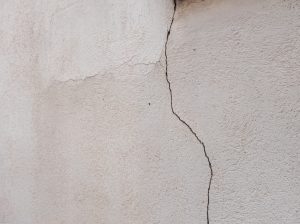 Since taking office, President Trump has issued sweeping executive orders targeting Diversity, Equity, and Inclusion (DEI) initiatives across federal agencies and directing agencies to take action to encourage private organizations to follow suit. On January 20, 2025, President Trump signed executive orders (EOs) titled Ending Racial and Wasteful Government DEI Programs and Preferencing and Extremism and Restoring Biological Truth to the Federal Government. The following day, he issued another EO titled Ending Illegal Discrimination and Restoring Merit-Based Opportunity. On January 22, 2025, the White House published a Fact Sheet providing guidance related to these orders. Many states were early adopters of such initiatives—e.g., in 2023 Florida passed a bill banning DEI initiatives in public colleges—or are now following suit in dismantling these programs as well within state agencies and institutions (such as Indiana, Mississippi, West Virginia, among others).
Since taking office, President Trump has issued sweeping executive orders targeting Diversity, Equity, and Inclusion (DEI) initiatives across federal agencies and directing agencies to take action to encourage private organizations to follow suit. On January 20, 2025, President Trump signed executive orders (EOs) titled Ending Racial and Wasteful Government DEI Programs and Preferencing and Extremism and Restoring Biological Truth to the Federal Government. The following day, he issued another EO titled Ending Illegal Discrimination and Restoring Merit-Based Opportunity. On January 22, 2025, the White House published a Fact Sheet providing guidance related to these orders. Many states were early adopters of such initiatives—e.g., in 2023 Florida passed a bill banning DEI initiatives in public colleges—or are now following suit in dismantling these programs as well within state agencies and institutions (such as Indiana, Mississippi, West Virginia, among others).
Articles Posted in CGL
A Shock to the System: Potential Ramifications of the Electric Energy Coal Ash Decision and Insurance Recovery
 In what was likely a shock to coal-fired electric utilities, the U.S. Court of Appeals for the District of Columbia Circuit held on June 28, 2024, that proposed decisions by the U.S. Environmental Protection Agency in January 2022—prohibiting coal-fired power plants from closing coal ash impoundments where coal ash is in contact with groundwater—were a “straightforward application” of a previously promulgated agency rule. In Electric Energy, Inc. v. Environmental Protection Agency, the appeals court validated EPA’s actions as a proper exercise of authority. This ruling ends (at least for now) a regulatory odyssey that began in 2015.
In what was likely a shock to coal-fired electric utilities, the U.S. Court of Appeals for the District of Columbia Circuit held on June 28, 2024, that proposed decisions by the U.S. Environmental Protection Agency in January 2022—prohibiting coal-fired power plants from closing coal ash impoundments where coal ash is in contact with groundwater—were a “straightforward application” of a previously promulgated agency rule. In Electric Energy, Inc. v. Environmental Protection Agency, the appeals court validated EPA’s actions as a proper exercise of authority. This ruling ends (at least for now) a regulatory odyssey that began in 2015.
Recent Illinois Supreme Court Decision on Construction Defect Claim Is a Perfect Holiday Gift for Policyholders
 The Illinois Supreme Court handed down a big win for policyholders just in time for the holidays. In Acuity v. M/I Homes of Chicago, LLC, the court joined the mainstream of jurisdictions and reversed years-old precedent that severely limited policyholders’ ability to tap their liability coverage for construction defect and faulty workmanship claims.
The Illinois Supreme Court handed down a big win for policyholders just in time for the holidays. In Acuity v. M/I Homes of Chicago, LLC, the court joined the mainstream of jurisdictions and reversed years-old precedent that severely limited policyholders’ ability to tap their liability coverage for construction defect and faulty workmanship claims.
Heads I Win, Tails You Lose: Washington Supreme Court Rejects Insurers’ Efforts to Sell Illusory Insurance Coverage
 Courts don’t look kindly upon insurance company shell games. In Preferred Contractors Ins. Co. v. Baker & Son Construction, the Washington Supreme Court slapped down an insurer’s attempt to manipulate the type of general liability “trigger” it wrote to sell coverage that was illusory.
Courts don’t look kindly upon insurance company shell games. In Preferred Contractors Ins. Co. v. Baker & Son Construction, the Washington Supreme Court slapped down an insurer’s attempt to manipulate the type of general liability “trigger” it wrote to sell coverage that was illusory.
Ebasco Choice of Law: A Decision Half a Century in the Making
 Following the breakup of large utility holding companies by trust busters in the 1930s, General Electric created Ebasco (Electric Bond and Share Company), a construction company and consultancy that, among other things, assisted newly independent utilities throughout the United States to obtain broad excess-level occurrence-based liability insurance policies. These so-called Ebasco policies were attractive to utility policyholders because of their comprehensive insuring agreement, modest exclusions (e.g., no pollution exclusions), and the absence of aggregate limits. Illustratively, a $10 million Ebasco policy potentially could pay up to 20 times its limits (equivalent to $200 million) to fund cleanup of 20 contaminated sites, assuming an occurrence at each site happened during the policy period. For decades, Ebasco policies, primarily underwritten by London market insurers, have been the subject of litigation related to pollution, asbestos and human health claims.
Following the breakup of large utility holding companies by trust busters in the 1930s, General Electric created Ebasco (Electric Bond and Share Company), a construction company and consultancy that, among other things, assisted newly independent utilities throughout the United States to obtain broad excess-level occurrence-based liability insurance policies. These so-called Ebasco policies were attractive to utility policyholders because of their comprehensive insuring agreement, modest exclusions (e.g., no pollution exclusions), and the absence of aggregate limits. Illustratively, a $10 million Ebasco policy potentially could pay up to 20 times its limits (equivalent to $200 million) to fund cleanup of 20 contaminated sites, assuming an occurrence at each site happened during the policy period. For decades, Ebasco policies, primarily underwritten by London market insurers, have been the subject of litigation related to pollution, asbestos and human health claims.
Generative AI’s Impact on Insurance Coverage: An Interview with ChatGPT-4 and Coverage Counsel on What Policyholders Should Be Doing Now
 Generative AI is transforming our economy in previously unimagined ways, with Goldman Sachs estimating a $7 trillion (7%) increase in global GDP by virtue of this ecosystem. Insurance is but one sector that will be impacted, with new products, services and opportunities for efficiencies being the most obvious benefits. For insight into the insurance implications of this technology, we asked AI oracle du jour ChatGPT-4 the top three ways it believes generative AI will impact policyholders.
Generative AI is transforming our economy in previously unimagined ways, with Goldman Sachs estimating a $7 trillion (7%) increase in global GDP by virtue of this ecosystem. Insurance is but one sector that will be impacted, with new products, services and opportunities for efficiencies being the most obvious benefits. For insight into the insurance implications of this technology, we asked AI oracle du jour ChatGPT-4 the top three ways it believes generative AI will impact policyholders.
Are Insurers’ Panel Counsel Rates Reasonable?
 It is a settled principle of insurance law that a liability insurer’s duty to defend is broader than its duty to indemnify. In most jurisdictions, if any portion of a complaint against a policyholder is even potentially covered, the insurer must defend the entire action.
It is a settled principle of insurance law that a liability insurer’s duty to defend is broader than its duty to indemnify. In most jurisdictions, if any portion of a complaint against a policyholder is even potentially covered, the insurer must defend the entire action.
“Stranger Danger”: The Perils of Loss Portfolio Transfers and Third-Party Administrator Claims Handling
 The past several decades have muddied what once was a clear relationship between policyholders and their insurers. For pre-1987 occurrence-based policies in particular, policyholders face an increasingly familiar scenario: one day, they learn they are no longer dealing with the insurer that sold them insurance. A stranger has crept into the relationship.
The past several decades have muddied what once was a clear relationship between policyholders and their insurers. For pre-1987 occurrence-based policies in particular, policyholders face an increasingly familiar scenario: one day, they learn they are no longer dealing with the insurer that sold them insurance. A stranger has crept into the relationship.
Faulty Workmanship May Still Be Covered in Pennsylvania
 If you were to look for a quick answer regarding whether a commercial general liability (CGL) policy covers damage resulting from faulty workmanship under Pennsylvania law, you’d likely come out believing the answer is “no.” Many article headlines, purported state surveys, and news reports come to that conclusion based on the general finding that faulty workmanship causing damages only to the work itself is not an “occurrence” under the standard CGL insurance policy definition. But this analysis misses a critical nuance in the case law and the important distinction between damage to the negligent contractor’s work and damage to “other property.”
If you were to look for a quick answer regarding whether a commercial general liability (CGL) policy covers damage resulting from faulty workmanship under Pennsylvania law, you’d likely come out believing the answer is “no.” Many article headlines, purported state surveys, and news reports come to that conclusion based on the general finding that faulty workmanship causing damages only to the work itself is not an “occurrence” under the standard CGL insurance policy definition. But this analysis misses a critical nuance in the case law and the important distinction between damage to the negligent contractor’s work and damage to “other property.”
EPA Announces Increased Efforts to Require Cleanup of Coal Ash – Insurance Should Be a Component of Companies’ Response
 Early in 2021, we wrote about potential insurance implications that could arise from the then-new Biden Administration’s expected regulatory priorities. Among other things, we noted that heightened scrutiny on coal ash was expected. On January 11, 2022, the U.S. Environmental Protection Agency (EPA) confirmed that prediction, issuing a press release announcing “key steps” it is taking to “protect groundwater from coal ash contamination.” As companies with coal ash liabilities consider EPA’s new guidance and next steps, they should be aware that they may have insurance that could cover some of their coal ash cleanup costs.
Early in 2021, we wrote about potential insurance implications that could arise from the then-new Biden Administration’s expected regulatory priorities. Among other things, we noted that heightened scrutiny on coal ash was expected. On January 11, 2022, the U.S. Environmental Protection Agency (EPA) confirmed that prediction, issuing a press release announcing “key steps” it is taking to “protect groundwater from coal ash contamination.” As companies with coal ash liabilities consider EPA’s new guidance and next steps, they should be aware that they may have insurance that could cover some of their coal ash cleanup costs.
 Policyholder Pulse
Policyholder Pulse


